The responsibilities and involvement of Production Managers may vary considerably depending on the scale of the production. It could be simply selecting or appointing competent persons to undertake the work on a larger production right down to being the responsible person for electrical safety on a small and simple location shoot, interview or piece to camera.
As a principal duty holder, PMs need to ensure the workplace is safe for everyone and this includes the requirement to ensure it is electrically safe. As an example, it is common to get scaffolding or other temporary structures put together by competent contractors and signed off before letting people use it. In the same way, it is important to ensure temporary electrical systems are put together by competent people and signed-off as being safe to use.
It is important to know that just because electrical equipment works, it doesnβt follow that the system will be safe in the event of a fault occurring. It is very easy to assemble a working system, but a higher level of skill and knowledge is required to ensure safety.
Not all systems require significant electrical skill. Basic checks such as making sure cables and equipment arenβt damaged, PAT labels are in date and protective RCDs (if fitted) work are all quite straightforward. The amount of skill required depends on the scale of the production. The graphic below gives an indication of what level of electrical co-ordination may be required for different events. On larger events the temporary power standard BS 7909 requires a βSenior Person Responsibleβ (SPR) to be appointed in order to manage the electrical safety across an event.
What Can Go Wrong?
Electricity is required for almost every work activity and is present in all workplaces. Appropriately managed it is quite safe, but faults and poor electrical designs are attributable to thousands of fires each year as well as many electric shocks. Some common hazards are as follows:
- Fires can occur if electrical equipment (including wiring) develops a fault or circuits are overloaded
- Contact with electricity through damaged equipment can cause electrical shock and/or burns.
- Faults with mains electrical systems can develop a tremendous amount of energy in a short time - so much so that it actually causes explosions.
- Electrical protection devices can be rendered useless by long cables or the wrong equipment
- Using electrical equipment in higher risk environments: wet, damp, humid, dusty conditions, increases the hazards significantly.
- Fires and burns from contact with hot surfaces.
- Batteries can start and sustain fires if the terminals are shorted together
- Electrical circuit protection may not work properly if the electrical system is not properly designed
- Earthing systems need to be effective and co-ordinated if there are multiple contractors or electrical supplies (e.g. generators)
- Some electrical problems (e.g. poor design) may only become apparent when there is a fault.
Legal/ΒιΆΉΤΌΕΔ Requirements
- Electrical systems have to comply with the Electricity at Work Regulations 1989. This places requirements on duty holders to ensure that electrical systems are designed managed and maintained by those with sufficient skills, knowledge and experience.
- The ΒιΆΉΤΌΕΔ expects all temporary electrical systems to comply with the IET Wiring Regulations (BS 7671) β often known as βThe 18th Editionβ or βWiring Regsβ.
- Temporary electrical systems, no matter how small, also need to comply with BS 7909, a code of practice for temporary electrical systems published by BSI. This standard is primarily about management of temporary systems.
- PMs should review the work and decide what level of electrical management is required as follows:
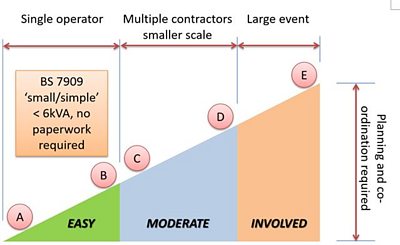
A. Single operator ENG; simple One Show event on the piazza outside NBH. Basic user-checks required.
B. Studio set-up, mostly using permanent infrastructure. Crew should do user checks and have basic electrical awareness training
C. Small sports OB (e.g. small football match) with two or three contractors. Electrical safety management responsibilities shared and co-ordinated between parties; SPR may not be needed.
D. Larger event (e.g. referendum debate, Wembley Arena), several contractors involved, co-ordination required, likely to require SPR to be appointed (may be an Engineering Manager)
E. Big event, multiple contractors, significant planning required (Olympics, Radio 1 big weekend)
General Requirements
- The dangers that electricity can create will, under most foreseeable situations, be removed or reduced to an acceptable level by following the requirements of the Wiring Regulations (BS 7671) and BS 7909. On risk assessments the control measure for electrical hazards is to ensure that a system has been planned, designed and tested in accordance with these standards.
- Checking equipment is tested or has PAT records, while important, is not sufficient to ensure electrical safety on a production. It is easy to connect safe equipment together in a manner that prevents protective devices from working.
- Those managing electrical systems must be sufficiently competent to do so. The ΒιΆΉΤΌΕΔ has competency requirements for those working on electrical systems detailed in Electrical Competencies (see links page).
- All temporary electrical systems must be designed where necessary and tested with the relevant paper work completed β examples of completed certificates can be downloaded (see sidebar).
- Ensure that crew conduct user-checks on equipment before being deployed.
- Lighting is not the only department using power. The obligation extends to all those using or supplying electrical equipment in whatever quantity or scale.
- Do not leave systems unattended when powered up unless suitable measures have been put in place to isolate the system in the event of a problem.
- If using mobile or transportable units such as portacabins, production office trailers or OB vehicles, ensure they come with an electrical installation certificate or an Electrical Installation condition Report (EICR). It should be dated within the last two years
- If any electrical wiring is done on-site, such as wiring up practicals or lighting on sets, it must be tested and documented by someone suitable competent (see sidebar for guidance)
- Consider additional or unusual risks associated with the deployment of the electrical system, such as rigging equipment at height, working in hot locations, near water or using supplies in other countries. (See guidance on assessing electrical risk pages)
- Plan for resilience of the system in the event of bad weather or other environmental factors. It may be as simple as turning everything off, or on a big production ensuring program output is maintained as far as reasonably practical. (see links page for lightning guidance)
- Make sure the correct equipment is selected for the job e.g. weatherproof connectors for outside use, not domestic style plugs and sockets.
- All cables to be appropriately routed and/or protected to reduce trip hazard and lighting or other stands secured to avoid movement. Rubber mats do not provide mechanical protection for cables, they only reduce the trip hazard. Cables routed across access/egress routes should be in proper cable ramps.
- Excess electric cable should not be left coiled as this can lead to overheating in the cable (this does not apply to signal or camera cables).
- Consider members of the public when cabling and siting equipment, particularly ones who may have mobility or sight impairment
Division Specific Issues
- No Division specific Issues
FAQ/s Did You Know
- No FAQ's
Useful documents for ES for Production Managers
Recommended links
-
Certificate in Temporary Electrical Systems Electrical safety training course designed to ensure those working with electricity in temporary distribution systems on productions can comply with BS 7909
ΒιΆΉΤΌΕΔ electrical safety topics
-
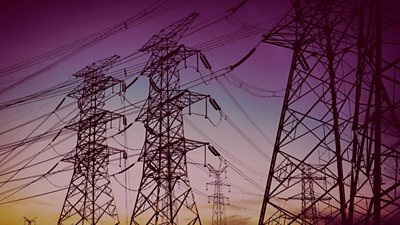
Electrical safety homepage
A selection of guidance documents and general advice in relation to Electrical Safety in ΒιΆΉΤΌΕΔ premises, on productions and events. -

ΒιΆΉΤΌΕΔ policies for electrical safety
ΒιΆΉΤΌΕΔ policies detailing its overarching approach to the management of electrical safety. -

ΒιΆΉΤΌΕΔ electrical safety guidance documents
Summary of ΒιΆΉΤΌΕΔ electrical guidance (links within document titles) -
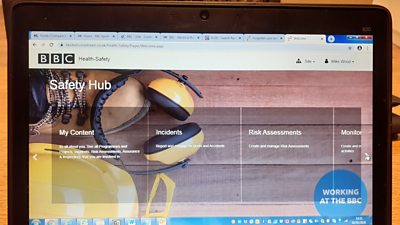
Electrical risk assessments and reporting of incidents
This section will help those who need to do a risk assessment where electricity is being used. It also gives guidance on reporting requirements for any electrically-related incident. -

Electrical safety in ΒιΆΉΤΌΕΔ Premises
General guidance on use of electricity and electrical equipment when working in ΒιΆΉΤΌΕΔ Premises. -
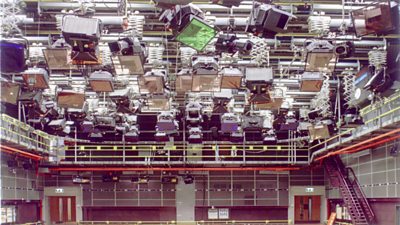
Electrical safety in Studios
A straightforward guide to electrical safety management in studios and similar locations. -

Safety of electrical equipment and appliances
Requirements for electrical safety of electrical equipment and appliances (βPAT testingβ). -
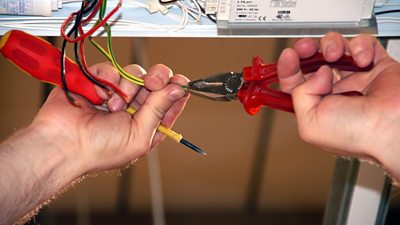
Electrical competency and Part P requirements
Guidance on what to look for when employing contractors or freelancers to do electrical work. -
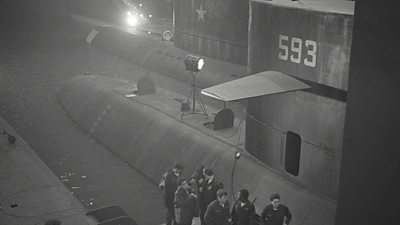
Electrical safety requirements for Production Managers
Find out what you should know and what measures should be put in place for your production. -

Bringing your own equipment to work and contributorβs equipment
Basic guidance on the safe and appropriate use of personal electrical equipment whilst at work and requirements. -
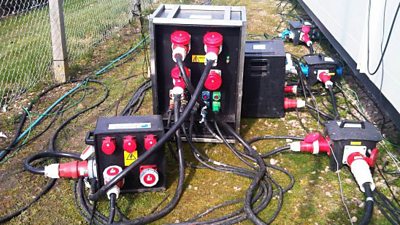
Temporary electrical systems and BS 7909
Requirements for electrical safety management in accordance with BS 7909 for all temporary electrical systems. -
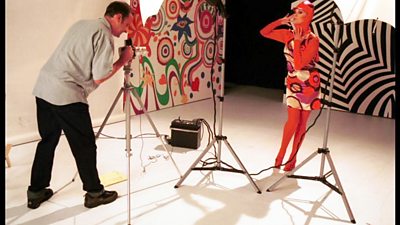
Small and Simple Temporary Electrical Systems
Guidance to help understand the requirements for simple temporary electrical systems such as interviews or photo shoots for example. -
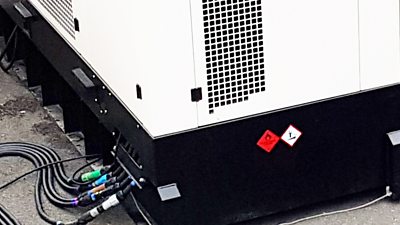
Generators
Guidance on the use of temporary generators including the application of earth electrodes. -
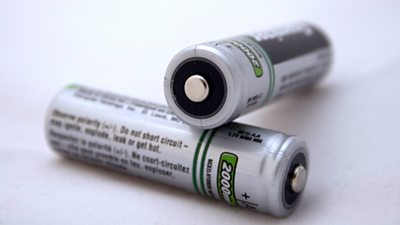
Batteries on Productions
Guidance on the safe use and storage of batteries. -
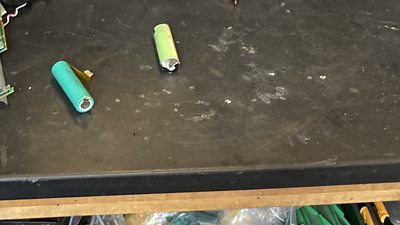
Lithium (Li-ion) Batteries
A guide on the safe use of Lithium Ion batteries -
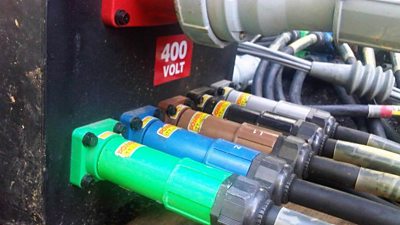
Certificate in Temporary Electrical Systems
An electrical safety training course designed to ensure those working with electricity in temporary distribution systems on productions can comply with BS 7909 and the relevant parts of BS 7671. -
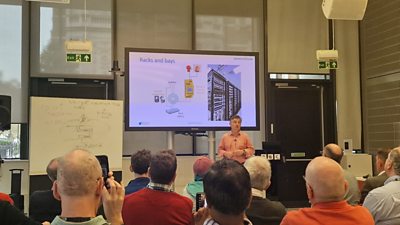 Electrical Principles Workshop to harmonise the approach to health and safety management on electricity across all areas.
Electrical Principles Workshop to harmonise the approach to health and safety management on electricity across all areas. -

External information and guidance on electrical safety
Links providing further information on all aspects of electrical safety, from external bodies (IET, HSE, Etc.) that ΒιΆΉΤΌΕΔ staff may find useful. Some guidance is required to be purchased. -

Health & safety Alerts and News
All the Health & Safety Alerts and News from the H&S Teams
More from SSR
-
Your platform to record accidents, risk assessments, assurance monitoring and inspections
-
Safety Equipment Stores
Just one number to call: 0844 800 8875 -
ΒιΆΉΤΌΕΔ Safety Guidelines
An A-Z of ΒιΆΉΤΌΕΔ's Health and Safety Guidelines -
Safety Advice Line: 0370 411 0464 Email: safety@bbc.co.uk
- A-Z of ΒιΆΉΤΌΕΔ Safety Guidelines
- Accident Reporting and Investigation
- ΒιΆΉΤΌΕΔ Health & Safety Policy
- Contractors (incl. vetted lists)
- Contributors
- Fire Safety
- Freelancers
- Independent Production Companies
- Risk Assessment
- Safety Alerts
- Safety Responsibilities
- Safety Training
- Sets & Premises Safety Guide
Events guidance - key links:
- Exhibitions
- General Guidance
- Indoor Location Recce Checklist
- Outdoor Location Recce Checklist
- Major Incidents & Emergency Planning
- Marketing and Promotional
- Noise Exposure
- Planning and Management
- Responsibilities
- Responsibilities Form
- Laser Lighting Effects
- Strobe Lighting
- Temporary Stages and Rostra
Health topics - key links:
- (ΒιΆΉΤΌΕΔ network only)
- Contributors Fitness to Participate
- Display Screen Equipment (DSE)
- (ΒιΆΉΤΌΕΔ network only)
- First Aid and Welfare on Location
- International Travel - Risks & Health
- Manual Handling
- Mental Health: ΒιΆΉΤΌΕΔpage
- (ΒιΆΉΤΌΕΔ network only)
- Personal Health and Wellbeing
- Pregnancy
- Psychological Trauma Support & Trauma Risk Management (TRiM)
- Tiredness and Fatigue
- Travel Health Contacts
ΒιΆΉΤΌΕΔ High Risk - key links:
- CBRN and Industrial Spills
- Covert Filming
- Crisis Management and Security Support
- Demonstrations, Protests and Crowds
- Disaster Coverage
- Door Stepping
- (ΒιΆΉΤΌΕΔ network only)
- (ΒιΆΉΤΌΕΔ network only)
- Public Order
- Safety Equipment Stores
ΒιΆΉΤΌΕΔ Journalism - key links:
ΒιΆΉΤΌΕΔ Productions - key links:
- Aerial Filming and Airfields
- Animals: Displaying and handling for performance
- Boats: Working on
- Children and Young People
- Driving
- Electrical Equipment and Systems
- First Aid and Welfare on Location
- Food Safety (Cooking and Catering)
- Remote Location Working
- Roads and Streets: Working by
- Security of Productions on Location
- Stunts
- Tiredness and Fatigue
- Unmanned Aerial Systems (UAS aka Drones)
- Vehicles: Recording in, from and around
- Working at Height: Mobile Elevating Work Platforms
- Working at Height: Tower Scaffolds
ΒιΆΉΤΌΕΔ Radio - key links:
- (ΒιΆΉΤΌΕΔ Network only)
ΒιΆΉΤΌΕΔ Security - key links:
ΒιΆΉΤΌΕΔ Sport - key links:
About this site
This site describes what the ΒιΆΉΤΌΕΔ does in relation to managing its health, safety and security risks and is intended for those who work directly for the ΒιΆΉΤΌΕΔ.
It is not intended to provide instruction or guidance on how third parties should manage their risks. The ΒιΆΉΤΌΕΔ cannot be held liable for how this information is interpreted or used by third parties, nor provide any assurance that adopting it would provide any measure of legal compliance. More information
Some links on this site are only accessible when connected to the ΒιΆΉΤΌΕΔ network
